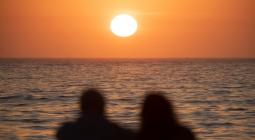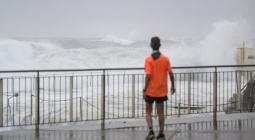Heatwaves may mean Sydney is too hot for people to live in 'within decades' .

Parts of Victoria and NSW are sweating through an extreme heatwave that started sweeping across Australia's southeast on Saturday.
This may seem like just a good excuse to go to the beach, but as the planet warms and summers become longer and less bearable, heatwaves are coming to represent an existential threat to Australian suburbs.
Already, heat kills more people in Australia than any other natural disaster, including floods, cyclones and bushfires.
Now, faced with the prospect of 50-degree-plus summers, experts say highly urbanised parts of Australia may become unliveable within decades.
The race is on to re-imagine, redesign and rebuild the Australian suburb.
Car parks may be ripped up and planted with trees and greenery, houses retro-fitted with insulation, roads painted to reflect rather than absorb heat, and supermarkets and even whole suburbs built underground to reduce cooling costs.
One centre of these efforts is Western Sydney, home to more than 2.5 million people.
In this floodplain of closely packed houses, heat pools on islands of black bitumen and collects on sun-baked concrete.
The mercury gets close to 50 degrees Celsius here in summer — and that's just the ambient air temperature. The radiant heat from bitumen carparks can push 80C. The surface temperature of playground equipment has been measured at 100C.
*watch the video here
Since 2019, all 33 Sydney councils have been funding a climate adaptation program that has identified heat as the number-one climate threat to Sydneysiders.
"We are not yet building a city that's really equipping our people to survive and adapt extreme heat," says Beck Dawson, who heads the Resilience Sydney program.
"If the community doesn't have access to things to make themselves cool we effectively have a very large oven occurring across the Western Sydney plains.
"The scale of the emerging threat is different to anything we've faced before."
When Penrith hit 48.9C
A taste of that future came on January 4, 2020, when Sydney — surrounded by bushfires — was struck by a heatwave that broke temperature records.
In the suburb of Penrith at the foot of the Blue Mountains, the mercury hit 48.9C, making it one of the hottest places in the world on that day.
At her nearby practice in Blacktown, GP Kim Loo prepared for the worst.
"It's a sense of dread," Dr Loo says about the days of forecast high temperatures.
"I have isolated patients who are near poverty or the working poor who are frightened about power prices."





